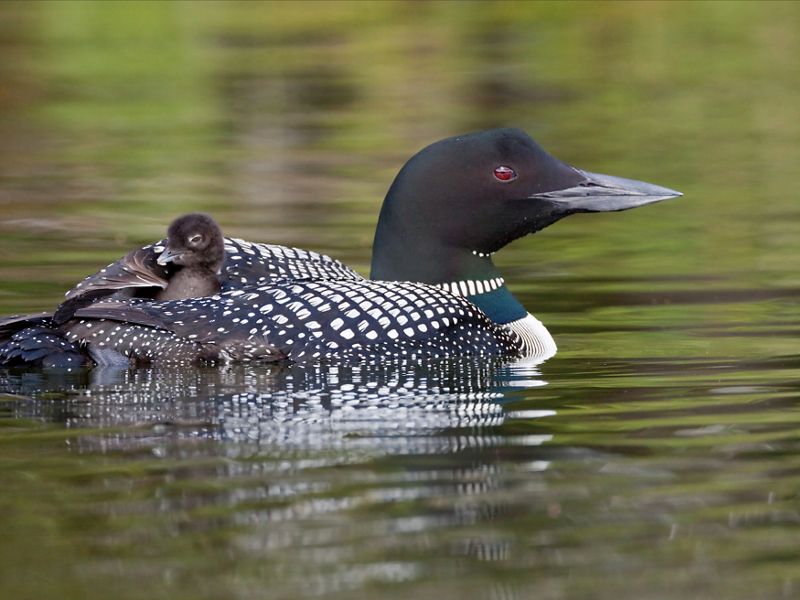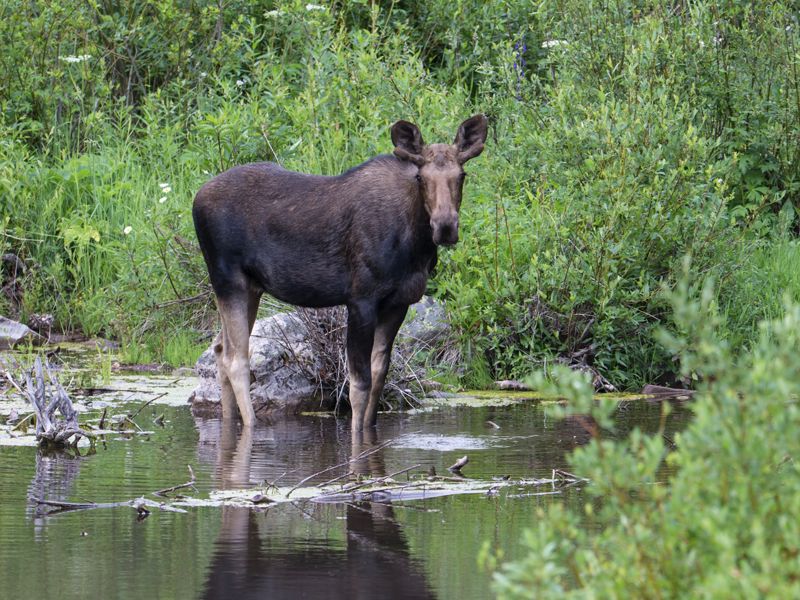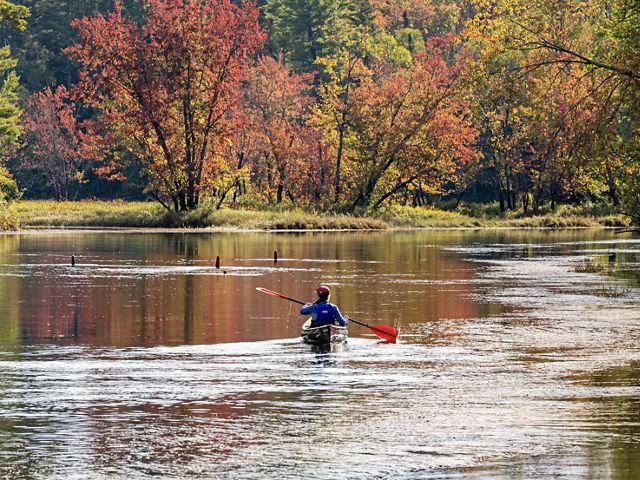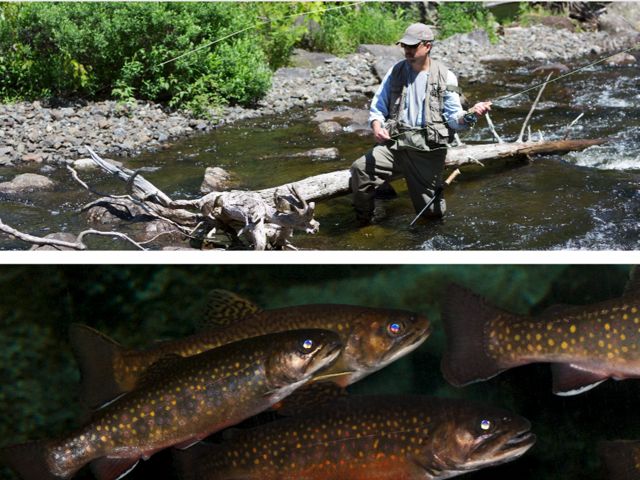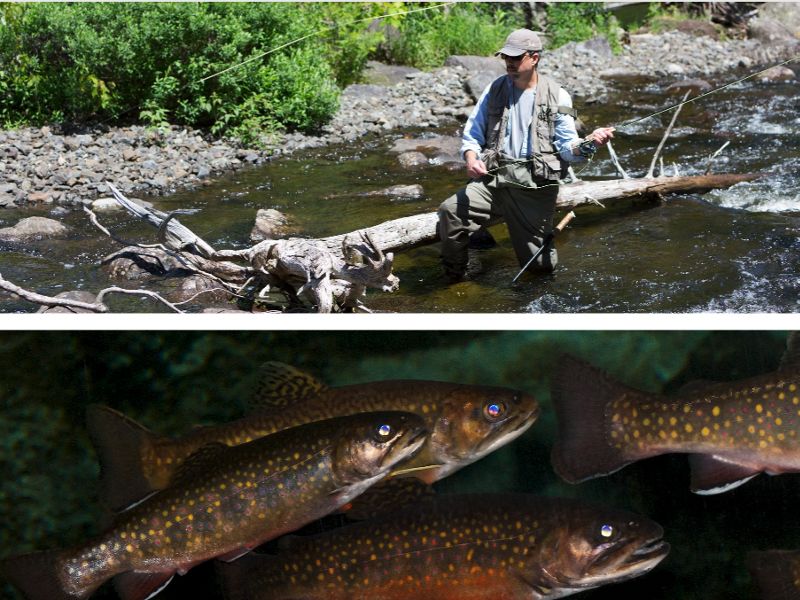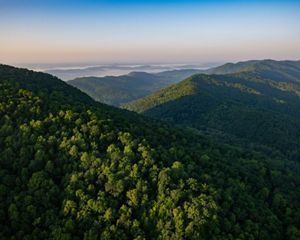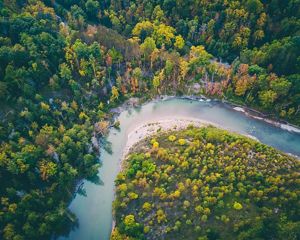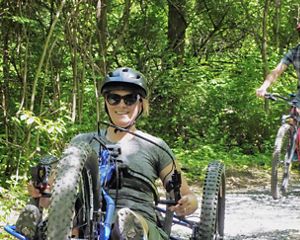
Follensby Pond Transforms Conservation—Again
Historic agreement protects Follensby Pond, creates innovative freshwater research preserve and expands public access in the Adirondacks.
Deep in the verdant heart of the Adirondacks lies a shimmering expanse of fresh water and forests relatively untouched for more than 100 years. Situated in Haudenosaunee and Abenaki homelands, Follensby was the site of Ralph Waldo Emerson’s ‘Philosophers’ Camp’ in 1858, which popularized a spiritual connection to nature and the wilderness preservation philosophy within a budding conservation movement.
Now, The Nature Conservancy and the New York State Department of Environmental Conservation (DEC) are protecting the 14,600-acre Follensby Pond for future generations.
This historic agreement—one of the largest ever in New York State—establishes a first-of-its-kind freshwater research preserve, provides new public access for recreation and recognizes the long-term relationships Indigenous Peoples have with the region.
Join Nature News
Stay up to date with us in New York and beyond!
Under this plan, TNC will retain ownership of the property, which it has stewarded for 15 years, and New York State will acquire two conservation easements—one for the Follensby Pond area and one for the Raquette River area. The river easement offers new opportunities for hiking, paddling, hunting and fishing on lands that have been historically off limits to the public. The pond easement pilots a collaborative approach to conserving fresh water in a changing climate while protecting the ecologically exceptional lake.
“Climate change demands more ambitious action, and this precedent-setting freshwater research preserve and science consortium at Follensby Pond is another example of New York State leading on climate and conservation,” said Bill Ulfelder, TNC's executive director in New York.
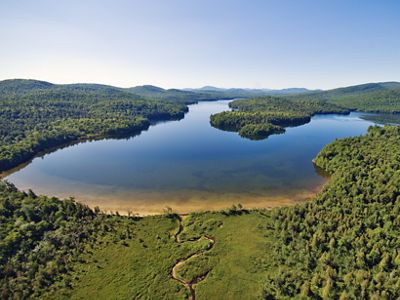

Liveable Lakes
Protecting the freshwater habitat of Follensby Pond is more important than ever. A recent Cornell study found that only about 5% of Adirondack lakes may continue to maintain water that is cold and oxygenated enough to support cold-water species in a warming climate. Protecting Follensby can help native fish—like these lake trout—persist in the face of climate change.
Protecting a Freshwater Marvel
Freshwater ecosystems are some of the most threatened on Earth—monitored freshwater populations have declined by an average of 83% since 1970. With cold, deep and highly oxygenated waters, exceptionally diverse populations of freshwater fish, mineral-rich bedrock, a diverse and healthy surrounding forest and more than 1,400 acres of wetlands, Follensby Pond is something of a freshwater marvel. It is one of the few remaining intact lakes in the lower 48 states that still supports a rare, old-age population of lake trout—and it ranks among the five most climate resilient trout lakes in the Northeast. Follensby also has an abundant population of cisco, another native cold-water species in serious decline. This is particularly important considering climate trends in the region. A new study found that only about 5% of Adirondack lakes may continue to maintain water cold and oxygenated enough to support cold-water species in a warming climate.
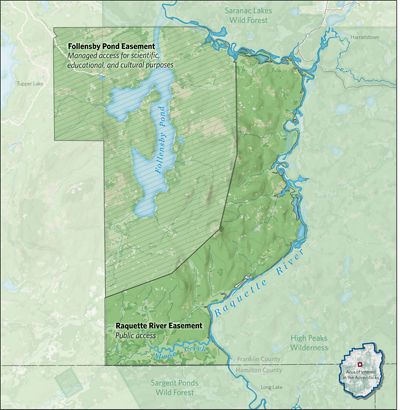
Guided by a multi-year research study and a comprehensive inventory led by McGill University, TNC, DEC, Cornell and others, The Nature Conservancy and DEC developed a plan that will protect these resources and the value they hold for future generations. By protecting the full genetic diversity of Follensby’s native fish populations, we can help lake trout and cisco persist in the face of climate change. Follensby Pond may also serve as a future source of brood stock for other waters.
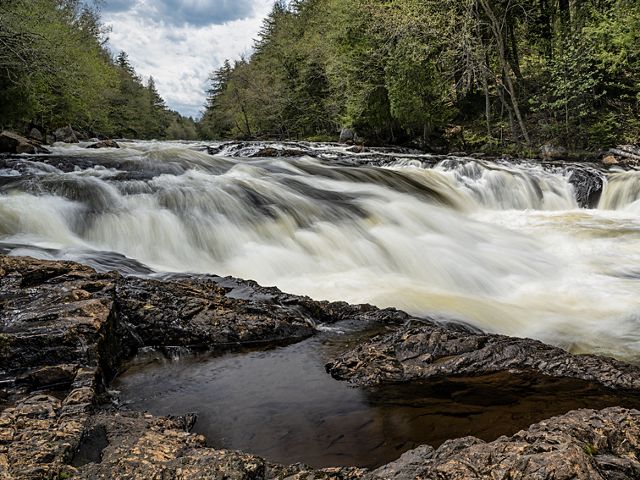
Collaborative Research to Address Climate Change
The conservation easement covering Follensby Pond and surrounding lands will establish an 8,660-acre freshwater research preserve that will be a reference site for monitoring and addressing the impacts of climate change while protecting refuge for cold-water fish and other aquatic plants and animals.
“2023 saw higher temperatures on this planet than in at least 125,000 years; that’s the context for this important announcement that climate researchers will be able to make use of a crucial record of the past, with huge implications for the future,” said Bill McKibben, author, educator and environmentalist.
To achieve the research potential here, DEC and TNC are establishing a public-private consortium, which to date includes Cornell University, DEC, Paul Smiths College Adirondack Watershed Institute, SUNY College of Environmental Science and Forestry, The Nature Conservancy, U.S. Fish and Wildlife Service and U.S. Geological Survey, to collaborate on novel research and guide the ecological care of the freshwater research preserve.
“I’ve worked all over the world—in the Amazon, the tropical forests of Belize, the Congo Basin—and I’m amazed we have this kind of intact ecosystem here in the Adirondacks,” said Dirk Bryant, TNC’s director of lands in New York. “Follensby Pond will serve as a living laboratory and as a lifeboat for cold-water species in the face of climate change; it will be a destination for researchers worldwide.”
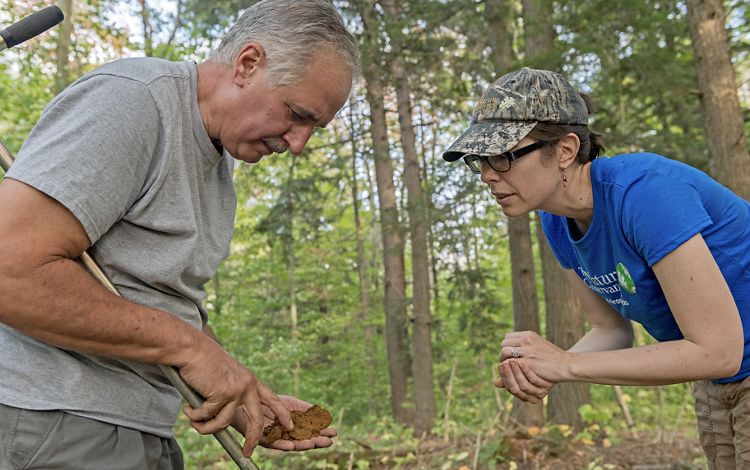
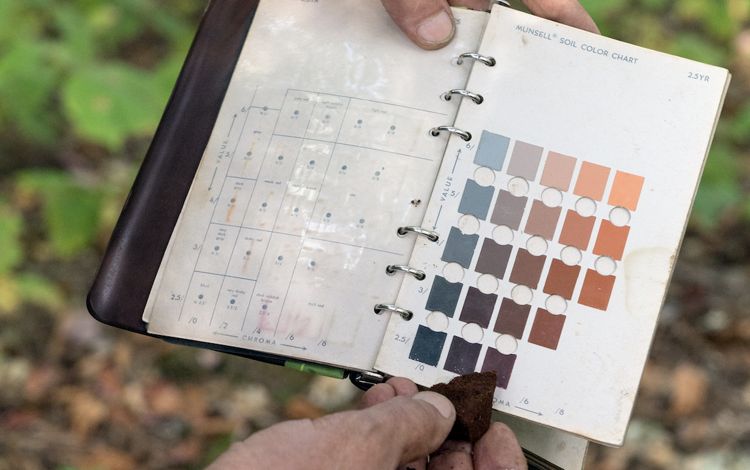
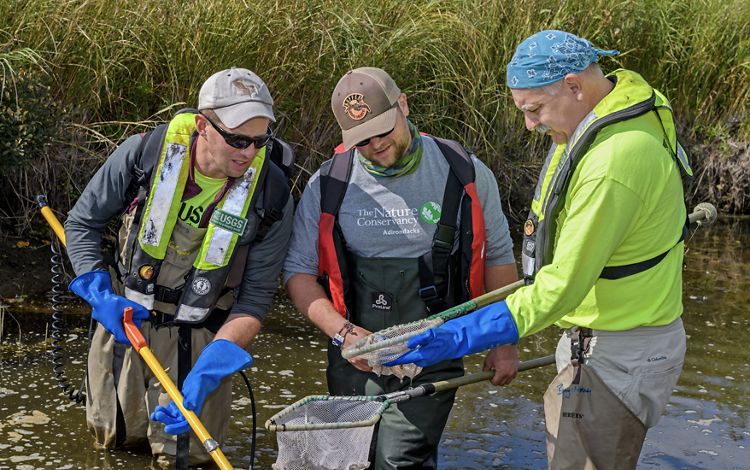
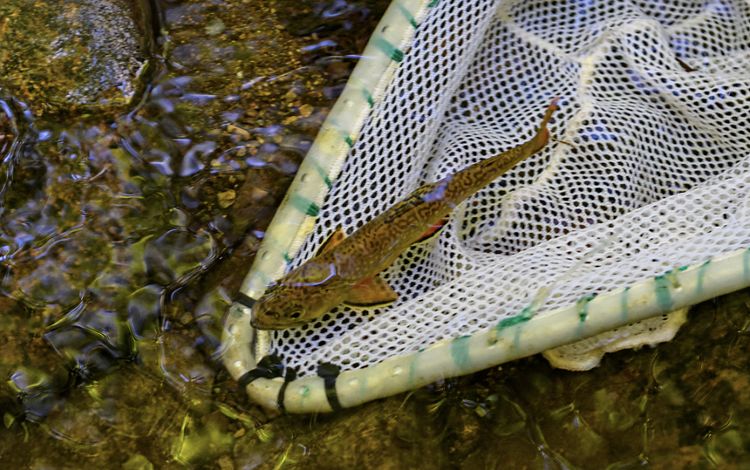
New Public Access and Recreational Opportunities
The second easement, which covers nearly 6,000 acres of the river portion of the property, will allow public access—for the first time in over a century—along 10 miles of the Raquette River. This section of the Raquette River is part of the iconic Northern Forest Canoe Trail and a portion of the longest canoe route in the Adirondacks, which runs 90 miles between Old Forge and Saranac Lake. It includes a beautiful and extensive stretch of silver maple floodplain forest and other wild areas that have been historically off limits to the public.
Opening the western shore of the Raquette River along this segment will provide new camping, hunting and fishing opportunities. Anglers will be able to explore Moose Creek and Beaver Brook, which host outstanding brook trout fishing. And hunters will be able to access new, remote terrain in season.
Restored Indigenous Relationships with the Land
Another way in which the easements are precedent setting is that they affirm access for Indigenous Peoples’ cultural practices, including ceremonies and gathering. Ultimately, restored relationships with this land will be shaped by Indigenous perspectives and priorities.
Through our new Indigenous Partnerships Program in New York and in partnership with SUNY College of Environmental Science and Forestry’s Center for Native Peoples and the Environment, TNC has been co-creating a more accurate narrative of Indigenous Peoples’ relationship with Follensby Pond, alongside restoring Indigenous Peoples’ access to and caretaking of their ancestral homelands. This effort aims to give voice to Indigenous perspectives in interpretation, education and stewardship practices at TNC preserves and recognizes Traditional Ecological Knowledge as an integral approach to climate resilience.
Quote: Dr. Robin Wall Kimmerer

Land care which reflects Indigenous perspectives and priorities has the potential to enhance the well-being of land and cultures in the extraordinary landscape of Follensby Pond.
The predominant narrative of European settlers has been that the Adirondacks were never permanently inhabited by Indigenous Peoples. There is now an understanding that the historical portrayal of the Adirondacks as an empty wilderness is inaccurate, and some of that evidence comes from near Follensby Pond.
The Penobscot, Abenaki, Oneida and Mohawk Nations are all known to have hunted, fished and lived in this region. An old portage trail, extending from Upper Saranac Lake to Stony Creek Ponds, still carries the name Indian Carry Road, and there are indications that the carry reached all the way to the Raquette River at the northeast border of the Follensby Pond tract.
Several private timber companies owned Follensby Pond in the 1800s and early 1900s and, reportedly, some of their logging practices devastated parts of the surrounding forests. TNC has been caring for these lands since it acquired the property from the McCormick family in 2008. Our commitment to Follensby includes honoring the full biological and cultural relationships in this special place, informed by collaboration with Indigenous Peoples and assisted through our partnership with the SUNY College of Environmental Science and Forestry’s Center for Native Peoples and the Environment.
“There is growing evidence from all around the world that biodiversity flourishes under Indigenous stewardship,” said Dr. Robin Wall Kimmerer, director of the Center for Native Peoples and the Environment. “With our partners, we look forward to creating opportunities for a productive collaboration between Traditional Ecological Knowledge and conservation science based on mutual respect, reciprocity and shared access. Land care which reflects Indigenous perspectives and priorities has the potential to enhance the well-being of land and cultures in the extraordinary landscape of Follensby Pond.”
The agreement with New York State follows an historic gathering in June 2023 at the University at Buffalo with 160 global conservation leaders calling on TNC to commit to ‘right relations’ as part of our Voice, Choice and Action framework.
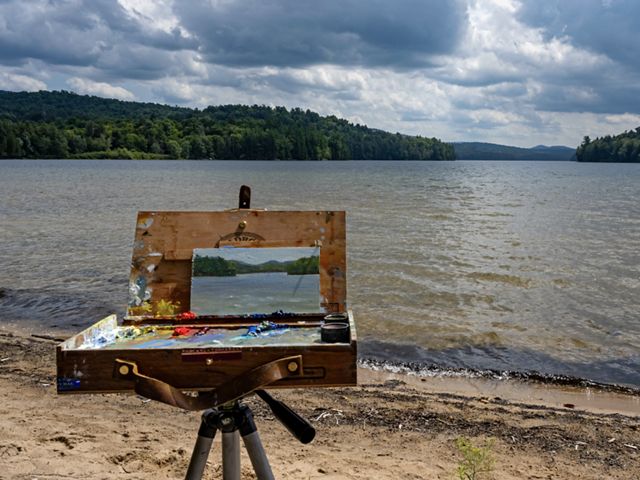
Enriching Educational Experiences
TNC is committed to providing access to educational experiences at Follensby that foster a deeper understanding of the critical role nature plays in our everyday lives. The renowned Wild Center is just a mile down the road from Follensby Pond and has been at the forefront of climate change education. By collaborating with The Wild Center and other organizations, TNC will develop educational and interpretive opportunities that inspire future advocates for nature.
Follensby also holds significant historical value as the site of the 1858 Philosophers’ Camp, where Ralph Waldo Emerson, William Stillman and other prominent 19th-century thinkers spent a month immersed in nature—an experience that influenced a new conservation movement. Soon after, stories of the Philosophers’ gathering spread, and people began to flock to the Adirondacks to seek their own solitude. Maps pointed the way to Follensby, which became overrun with tourists. When one of the original 10 philosophers returned to the site in 1884, he wrote that all around were, “ashes and ruin.”
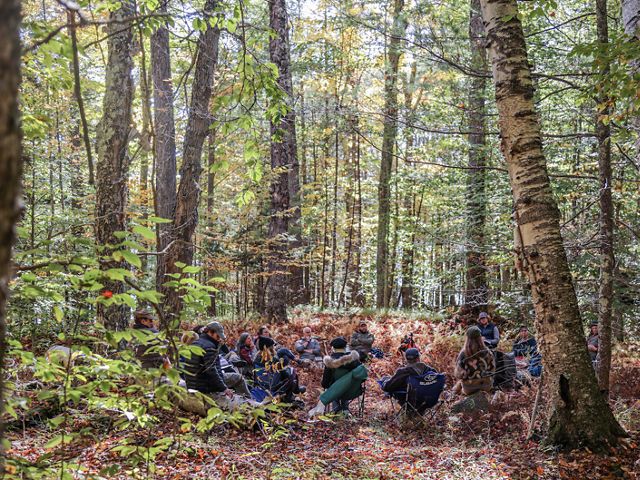
A Second Chance Wilderness
Today, the land has recovered and offers lessons on resilience. In 1950, for instance, Follensby was one of the last places in the Adirondack Park with nesting bald eagles. By the 1960s, eagle populations had plummeted due to the use of the now-banned pesticide DDT, and only one pair remained in New York. This once endangered bird’s populations have since rebounded thanks in part to DEC’s introduction of bald eagle chicks at Follensby that were brought in from Alaska in the 1980s. Follensby was selected as the sole site for raising and releasing the birds in the Adirondacks because of its abundant habitat and lack of human disturbance. As many as 60 eaglets were released at Follensby over several years, and today more than 170 nesting pairs of bald eagles live throughout the Adirondacks and New York State.
The Adirondacks are sometimes called “the second chance wilderness” in reference to how the land has recovered from widespread logging and the healing that can happen when people commit to prioritizing nature. Today, TNC’s creative agreement with New York State represents a once-in-a-lifetime chance to carry out a novel approach to preservation that builds on the legacy of the Adirondack Park as a proving ground for conservation.
The story of Follensby Pond is one of inspiration, near ruin, restoration and the chance to repair relationships with the land—and its future offers something for everyone. Stay tuned to learn more about this storied landscape, explore new recreation areas and support the future of Follensby Pond.
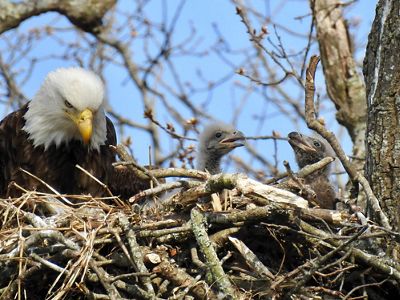
The Nature Conservancy acquired and has been caring for Follensby Pond for over 15 years with funding provided by a grant from the National Fish and Wildlife Foundation through Walmart’s Acres for America Program, and the generosity of other foundations and our many individual donors.
Funding for the conservation easements was provided by New York State’s Environmental Protection Fund (EPF). The EPF supports climate change mitigation and adaptation efforts, improves agricultural resources to promote sustainable agriculture, protects water sources, advances conservation efforts, and provides recreational opportunities for New Yorkers.
Help Protect Fresh Waters
Your donation will support urgent conservation work to protect the nature you care about.


